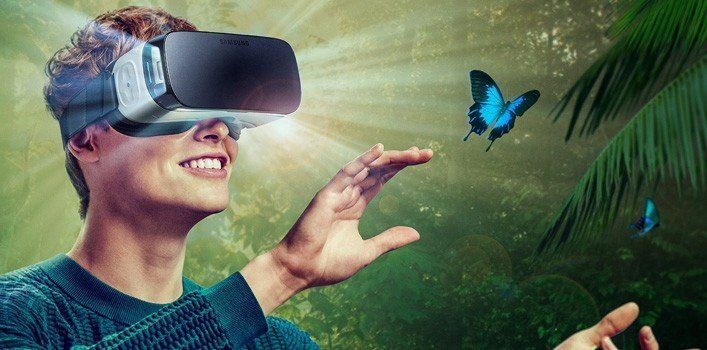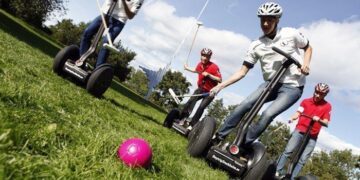Before we start I think I should explain virtual reality. We’ve all used some form of this technology, in arcades to modern classrooms.
Virtual reality is defined, according to the Oxford English dictionary, as “a computer-generated simulation of a three-dimensional image or environment that can be interacted with in a seemingly real or physical way by a person using special electronic equipment, such as a helmet with a screen inside or gloves fitted with sensors”.
To me, virtual reality is something that is used solely for gaming, previously only found in those arcade simulator pods.
It’s actually a way of allowing a person to completely submerse themselves in a game, movie or scene and is pretty genius.
Origins of Virtual Reality
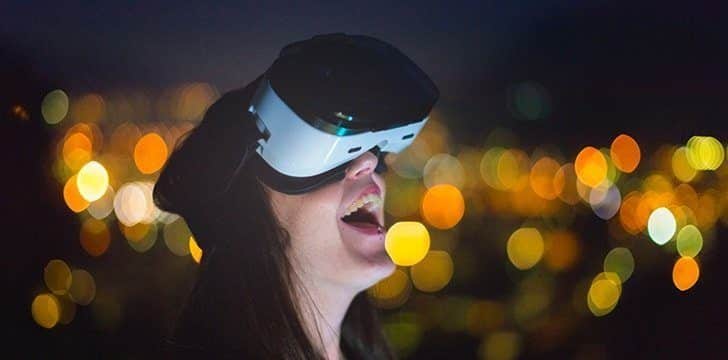
The first use of virtual reality, or by definition a device-assisted manipulation of a computer, would be in 1962 with the creation of the light pen, a device capable of writing on a computer without the need for physical ink.
The first real immersive experience came in the 1970’s when the US, with newly advanced computer-generated graphics, built the first real flight simulator in real-time and by the 80’s with better hardware, software and motion-control platforms, pilots were able to fly through virtual worlds.
For virtual reality gaming, the birthplace would either be the Nintendo Power Glove or the Segascope 3-D.
Released in 1987, the Segascope was a basic pair of 3-D glasses produced for the Sega Master System which, instead of lense projected images, used a rapid-fire shutter system that opened and closed each side one after another.
Cathode ray tube TVs would send half an image each time and the glasses in turn were timed to utilize this, giving the illusion of seeing stereoscopic 3-D.
Throughout history there were also numerous successes and flops from many of the big brands, from Sega’s VR to Nintendo’s Virtual Boy and Sony’s EyeToy to Xbox Kinect.
Modern Virtual Reality
Anyway, that’s enough history and background let’s get on to the ways virtual reality is being used every day.
One of the main modern uses for it seems to be in the gaming world, understandably the player wants to submerse themselves in their game and feel physically a part of it, and this has become particularly manageable post-2012.
The oculus rift is one of the more common virtual reality equipment on the market today, with 1080p display and infrared positioning, being supported by some big PC gaming names but mainly the games are more of the Indy genre.
HTC’s Vive is the next competitor to the Oculus’ title though, creating a relationship with the well-known Steam gaming and is gaining real traction in this area of technology.
Even the heavy-hitters of the gaming world are getting involved! PlayStation are set to release the PlayStation VR in October 2016 with fully 360 degree movement showing just how viable virtual reality is for the modern gamer.
Educational Uses
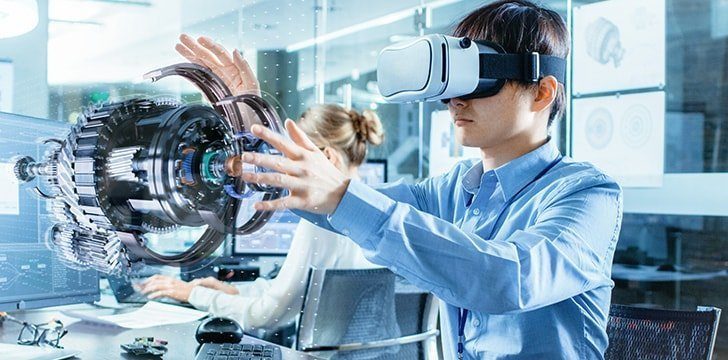
Another important use for virtual reality, that’s becoming more and more common, would be in education.
This is particularly the case for those in at-risk groups or with disabilities, as it allows them to have much more of a hands-on and immersive experience in their learning.
This can be a great tool compared to sitting with a textbook, with some suppliers even stating that Virtual Reality and Interactive 3D solutions for education have been shown to increase students attention levels by 92% and increase test scores by 35%.
Some companies are offering so called idesks, a monitor and 3D glasses combo that allows a student to fully involve themselves with their learning, with real-time response and head-tracking, students can create 3D models and designs.
An example of how this technology is already being used in schools is to travel the globe all from the comfort of the classroom, projecting landscapes and different locations via an Android device, a cheap pair of cardboard VR glasses and an app all controlled by the teacher’s tablet.
Uses for Job Training

Tying in with education, and in my opinion the most useful application of virtual reality, would be that of training.
Virtual reality allows any scene to be replicated without as much pressure, danger and time constraints, it allows trainees to focus, repeat and develop their skills in these areas without the potential problems listed previously.
Everyone from fighter pilots and bomb disposal to medics and firemen can and should use this technology to their advantage.
I feel that this will become one of the most commonplace and effective ways in which those outside gaming use virtual reality to benefit life and the world itself.
Flight simulators, as mentioned before, are a vital part of training pilots and now in 2016 you will see a development and rollout of Eyesi.
Eyesi is a state-of-the-art virtual reality device comprising of a life-size eyeball in a mannequin head that’s then projected onto a screen in real-time and allows a person to carry out surgery through a microscope.
The Eyesi allows ophthalmology residents to practice procedures in a much more efficient and realistic manner compared to previous training procedures, these operations can include cataracts, intra-ocular and retinal surgeries.
Virtual reality really is mind-boggling. In the future I feel this area of training technology like flight simulators and Eyesi, will make their way into all universities, colleges and training establishments.
It will allow a trainee to practice without any real-life consequences and gives the opportunity for repetition of these simulators, developing them as a practitioner which trickles down to more effective workers whether you’re a fireman or a nurse.
It seems that many organisations agree with this thought investing thousands in VR development one of these being St Georges University London who have established a new clinical simulation center that emulates scenes like a nightclub fire or roadside crash, all with the aim of training the next wave of paramedics.
In classroom education, there are so many ways virtual reality can be used.
From interactive idesks, to completely delving into a replica of historical scenes.
Virtual reality will allow so many more pupils to be more engaged in their study and get the most out of education and I do think that soon enough, almost every school will employ idesks or similar technology.
The marketing world always jumps head on into any technological advancement as a way of getting ahead, this being no exception.
Development
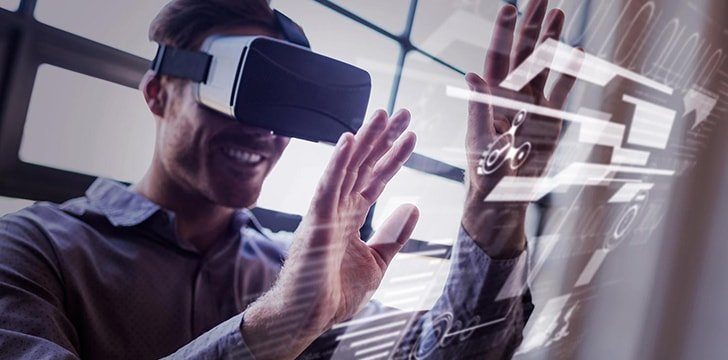
Through the wonders of VR they’re already working on virtual catalogs as a way of testing a product, holiday or experience and this will definitely become an everyday occurrence as virtual reality becomes more common.
TUI, a leading travel agent group for example, has rolled out its new concept to more than 120 European travel agencies including Thomas Cook, giving customers, through the use of interactive tools like world maps and iPads, inspiration when planning their next trip.
Although virtual reality seemingly focuses its application for gaming, there are so many more ground-breaking and significant uses for this technology as we’ve seen above.
Every school, university, pupil and trainee professional will one day use virtual reality on a daily basis for training, simulations and developing their skills.
This technology really is a game changer, a way to immerse oneself in a different world, a different environment and a completely realistic life-like simulation of a catastrophic event all without the need for travel, risk or complications; it really is a win-win.
At the same time though, from a gamer viewpoint, the idea of complete 3D 360 degree gameplay is astounding and why can’t technology be both serious and ground breaking for the modern world and a way for people to relax and enjoy themselves?
I for one will be getting a PlayStation VR and cannot wait to see the impact of virtual reality as it becomes the norm and unfurls itself across every sector and institution making every person more effective at their chosen profession, subject or way of life.
